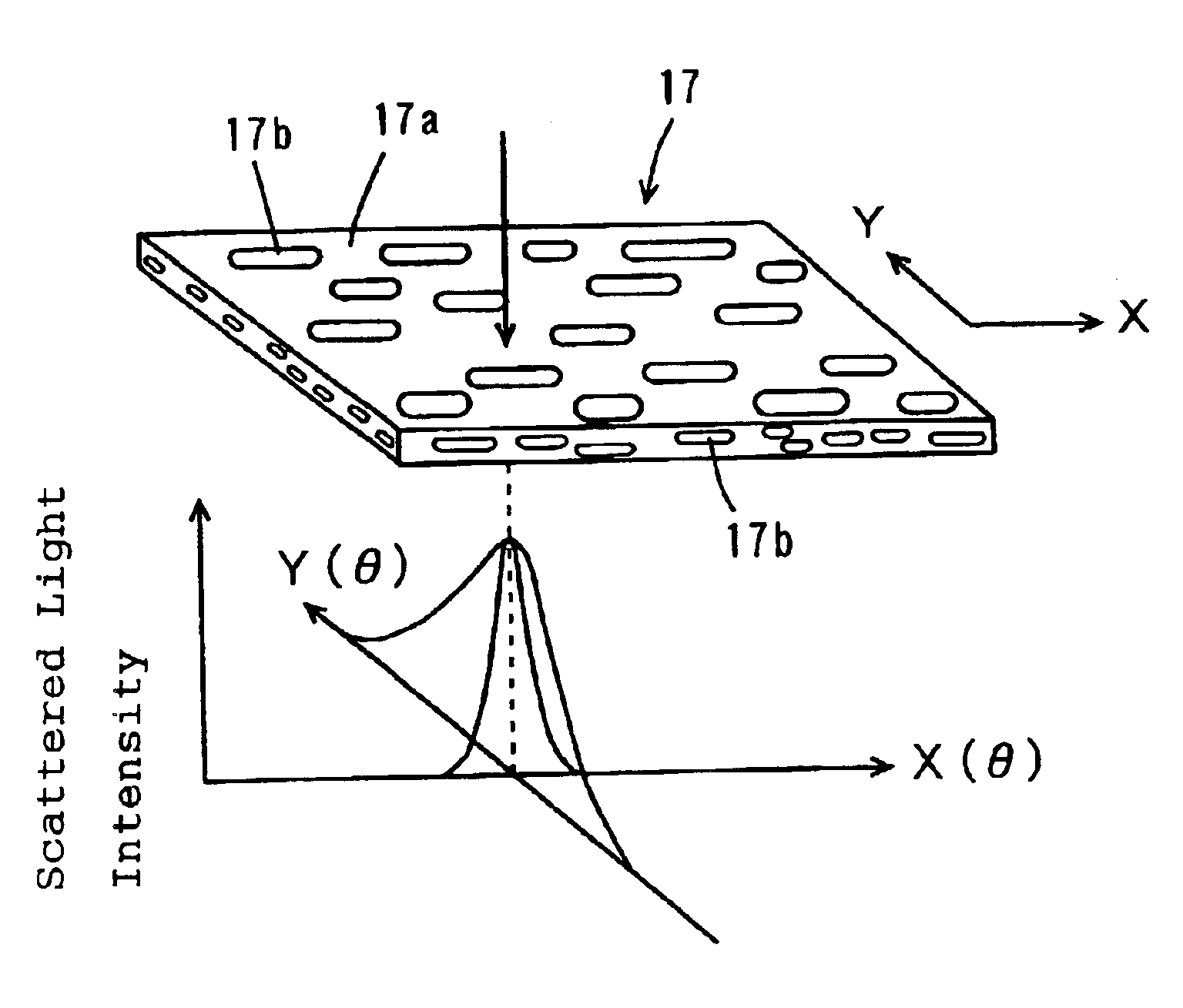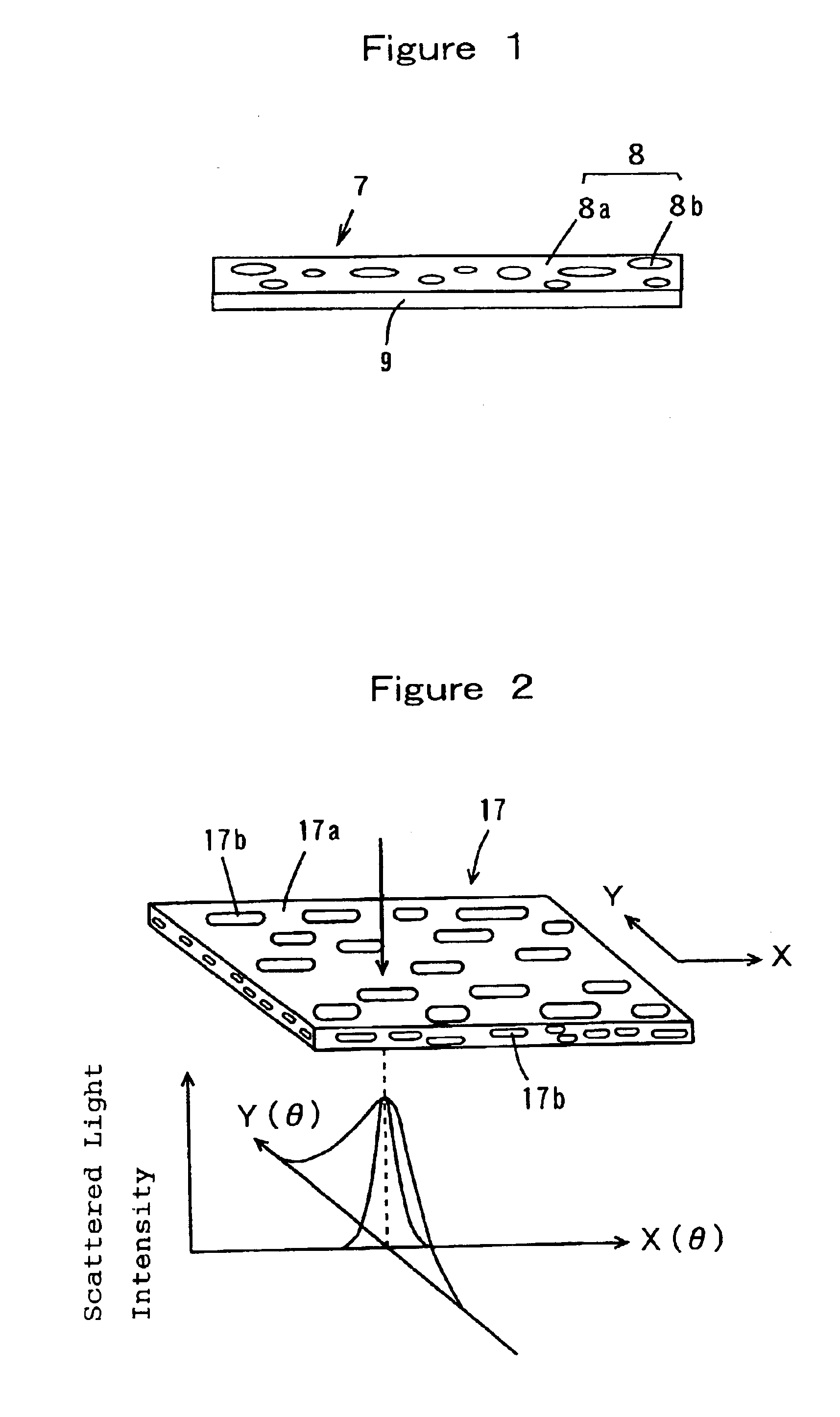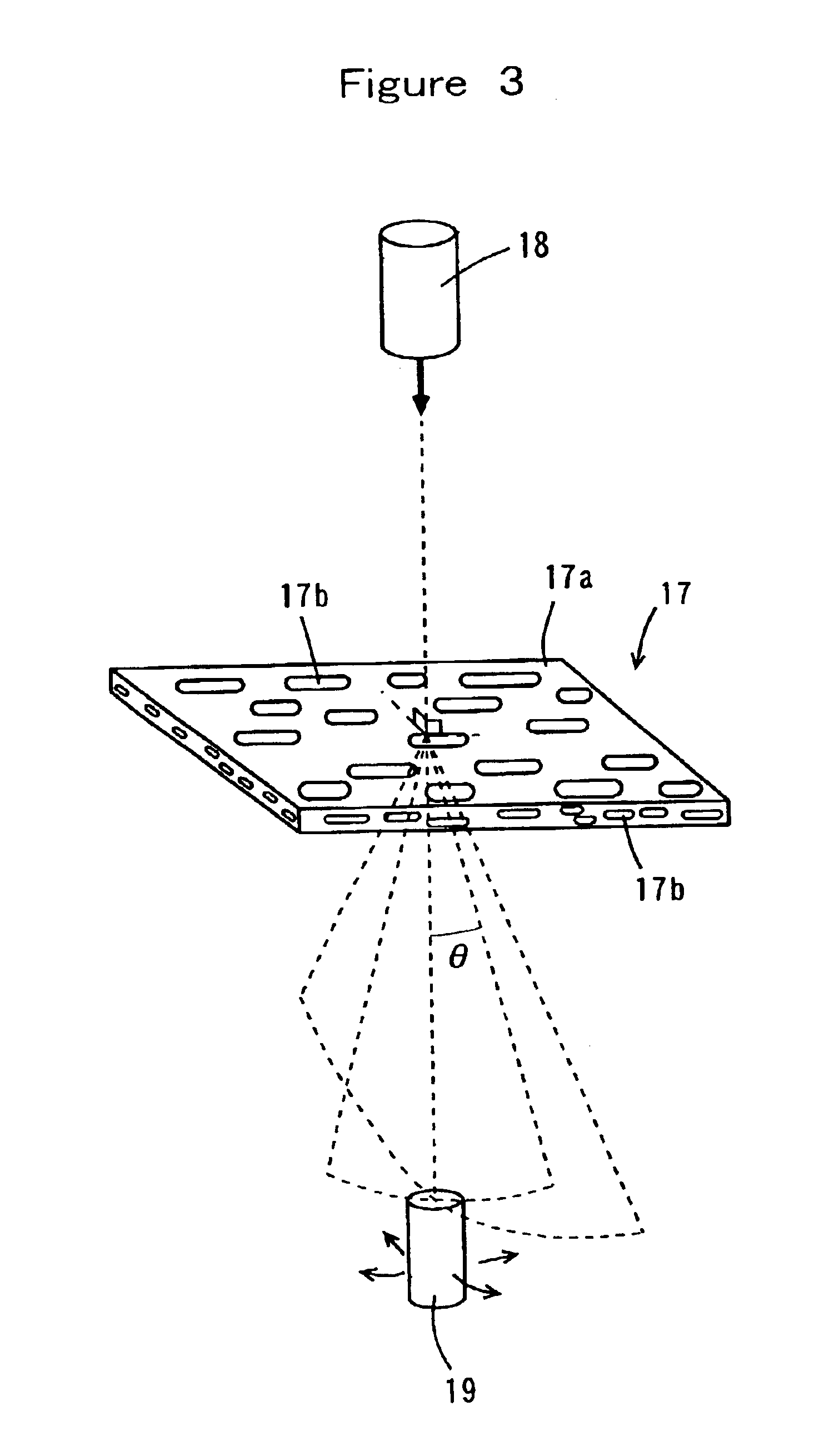Light diffusion film, plane light source device and liquid crystal display apparatus for enhancing a constant luminance and diffusing a light
a technology of liquid crystal display and diffusion film, which is applied in the direction of planar/plate-like light guides, instruments, transportation and packaging, etc., can solve the problems of further driving up the cost of assembling, increasing the defective fraction, and driving up the cost of raw materials and assembling. , to achieve the effect of reducing the cos
- Summary
- Abstract
- Description
- Claims
- Application Information
AI Technical Summary
Benefits of technology
Problems solved by technology
Method used
Image
Examples
example 1
[0163]The following resins were used: 90 parts by weight of a crystalline polypropylene-series resin PP (manufactured by Grand Polymer Co., F133, refractive index: 1.503) as the continuous phase resin; 9.5 parts by weight of a polystyrenic resin GPPS (general purpose polystyrenic resin, manufactured by Daicel Chemical Industries, Ltd., GPPS#30, refractive index: 1.589) as the dispersed phase resin; and 0.5 part by weight of an epoxidized diene-series block copolymer resin (manufactured by Daicel Chemical Industries, Ltd., Epofriend AT202; styrene / butadiene=70 / 30 (by weight), epoxy equivalent: 750, refractive index: about 1.57) as the compatibilizing agent.
[0164]The above continuous phase resin and dispersed phase resin were dried at 70° C. for about 4 hours, and these resins and the compatibilizing agent were kneaded in a Banbury mixer. Using an extruder, the resultant was melted at about 220° C. and extruded from a T-die with a draw ratio of about 3 onto a cooling or chilling drum ...
example 2
[0166]As components for the light-diffusing layer were used 85 parts by weight of a crystalline polypropylene-series resin PP (manufactured by Grand Polymer Co., F133, refractive index: 1.503) as the continuous phase resin; 14.5 parts by weight of a polystyrenic resin GPPS (general purpose polystyrenic resin, manufactured by Daicel Chemical Industries, Ltd., GPPS#30, refractive index: 1.589) as the dispersed phase resin; and 0.5 part by weight of an epoxidized diene-series block copolymer resin (manufactured by Daicel Chemical Industries, Ltd., Epofriend AT202; styrene / butadiene=70 / 30 (by weight), epoxy equivalent: 750, refractive index: about 1.57) as the compatibilizing agent. As a component for the transparent resin layer, the above crystalline polypropylene-series resin PP was used.
[0167]The above components for the light-diffusing layer and the component for the transparent resin layer were each dried at 70° C. for about 4 hours, and the components for the light-diffusing layer...
example 3
[0169]A film was produced in the same manner as in Example 2 except that a noncrystalline copolyester-series resin was used instead of the dispersed phase resin. That is, the following resins were used: 80 parts by weight of a crystalline polypropylene-series resin PP (manufactured by Grand Polymer Co., F133, refractive index: 1.503) as the continuous phase resin; 19 parts by weight of a noncrystalline copolyester-series resin (PET-G, manufactured by Eastman Chemical Company, Eastar PETG GN071, refractive index: 1.567) as the dispersed phase resin; and 1 part by weight of an epoxidized diene-series block copolymer resin (manufactured by Daicel Chemical Industries, Ltd.; Epofriend AT202; styrene / butadiene=70 / 30 (by weight), epoxy equivalent: 750, refractive index: about 1.57) as the compatibilizing agent. For the surface layer (transparent resin layer), the same resin as the above continuous phase resin was employed.
[0170]As with Example 2, using an extruder of multi-layered type, th...
PUM
| Property | Measurement | Unit |
|---|---|---|
| mean size | aaaaa | aaaaa |
| mean aspect ratio | aaaaa | aaaaa |
| refractive index | aaaaa | aaaaa |
Abstract
Description
Claims
Application Information
 Login to View More
Login to View More - R&D
- Intellectual Property
- Life Sciences
- Materials
- Tech Scout
- Unparalleled Data Quality
- Higher Quality Content
- 60% Fewer Hallucinations
Browse by: Latest US Patents, China's latest patents, Technical Efficacy Thesaurus, Application Domain, Technology Topic, Popular Technical Reports.
© 2025 PatSnap. All rights reserved.Legal|Privacy policy|Modern Slavery Act Transparency Statement|Sitemap|About US| Contact US: help@patsnap.com



